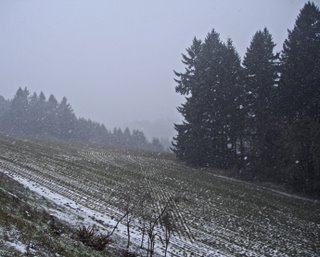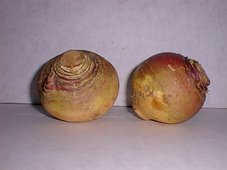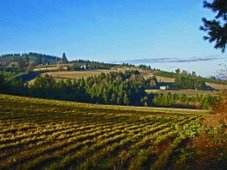 ARSI applies the soundest principles of agronomy in managing the experimental rutabaga fields near its World Headquarters in Forest Grove, Oregon. In this scenic photo, you can see that a rotated crop of winter wheat was well established before our first snowfall a few weeks ago.
ARSI applies the soundest principles of agronomy in managing the experimental rutabaga fields near its World Headquarters in Forest Grove, Oregon. In this scenic photo, you can see that a rotated crop of winter wheat was well established before our first snowfall a few weeks ago.In early November, ARSI Variant 09-4327RV-06 was harvested from these same fields, yielding 27.4 metric tons of rutabaga per acre. The viability of this promising rutabaga strain is currently under study in ARSI's labs.
In nearby fields, other varieties of rutabaga will be grown throughout the year. ARSI President for Life Obie MacAroon is currently on an extended tour of the upper Amazon basin, searching for tropical variations of the rutabaga that may be able to thrive in middle latitudes during the current global warming trend. President MacAroon plans to file a detailed report on his findings via satellite after the New Year. Rest assured that ARSI will always remain on the cutting edge of rutabotany.





3 comments:
You people should be plowing your fields with the contours rather than across them! Forest Grove looks like a pretty wet place, so you should be more careful about preventing erosion. Otherwise, I loved the scenic picture!
Don't be misled: the "anonymous" writer above was traced, using stealth technologies, to the GLAT ("Gotta Love a Turnip") cabal in Ketchum, Idaho. GLAT never misses an opportunity to discredit, generally with invented "facts," ARSI and the rutabaga.
Okay, I've tried both and I have to agree: rutabagas taste and even look better than turnips. They're hardier, too. But you guys live in a fantasy world if you think they'll ever improve their market share. Where I grew up (in New England), most people referred to rutabagas as "turnips." This confusion helps ensure that ARSI will never prevail in its campaign against GLAT and the turnipites.
Post a Comment